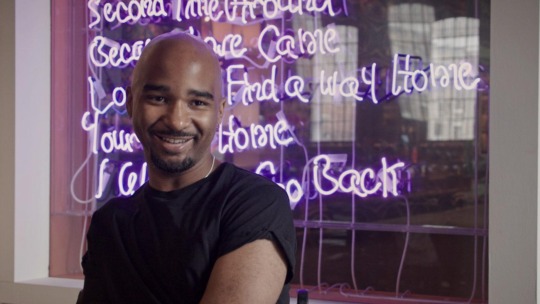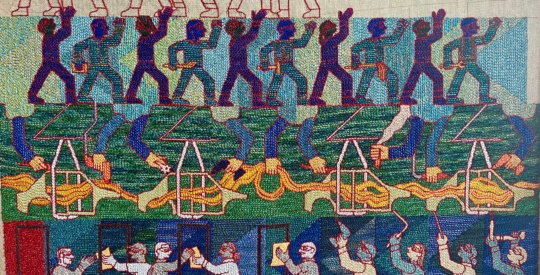
Visual representation establishes the canon, the social norms that dictate how society views marginalized communities. The U.S. is at a tipping point where representation is allowing transgender and nonbinary individuals to shed their titles of excluded Other. The transition is difficult — as pop culture brings transgender artists into public view, as organizations add inclusivity practices nationwide, as publicized transgender narratives subtly shift from tragedies or comedies into a relatable human experience — but it has always been difficult. There is an undeniable push toward normalizing transgender and nonbinary experiences led by members of the LGBTQIA community.
Social acceptance begins with representation but is rooted in information. I’ll briefly clarify my Western-biased use of the terms transgender and nonbinary. Transgender individuals are people who identify as a gender that is not the same gender that they were assigned at birth, and the trans- in transgender does not necessarily reference the “transition,” shorthand for medical transition and colloquial for sex reassignment surgery. Nonbinary individuals are people who identify outside of the gender binary, which is composed of the male and female genders. Nonbinary can entail a single identity of nonbinary, or it can reference a group of identities that includes transgender, genderfluid, agender, and more.
Asheville artist Mac McCusker uses self-portraiture to establish representation of transgender and nonbinary individuals within the art community. Her medium is ceramics, and the transformative nature of clay lends itself to the topics of identity and change. Traditions within ceramics reinforce the gender binary with outdated concepts of the domestic feminine and the permanent masculine; however, as identity becomes diverse and more fluid, the binary concepts within ceramics steadily grow irrelevant. McCusker reclaims ceramics on her own terms, reorienting discussions to center around nonbinary narratives after exploring emotional themes of her artistic practice.

McCusker began her art career at Armstrong State University in Savannah, Georgia, with the intention of becoming a painter. Ceramics was a last-minute addition, an elective to round out her three-dimensional studies. She immediately identified with the medium and continued pursuing ceramics, attending the National Council on Education for the Ceramic Arts (NCECA) where she attended a demonstration by Kathy King. At the time, King represented Georgia State University, and McCusker was drawn to King’s imagery and strong contrast of color and of gender roles.
Her experiences at NCECA influenced her choice in graduate studies. McCusker entered Georgia State University intent on expanding her existing artistic practice. Her previous focus was humanity’s impact on endangered species, and she depicted their struggles with one-liners and general humor. During graduate school, McCusker’s professors challenged her to get out of her comfort zone, which meant no life-sized representational work, no humor, and no color. She was forced to explore the versatility of clay, and the stipulations placed on her practice charged the content of her new work. Until that point, McCusker used her art to speak about struggles and themes she could relate to as a closeted nonbinary individual, but she still wasn’t ready to speak directly and openly about transgender issues. Graduate school helped McCusker find strength in her identity by providing a safe space to isolate and discuss emotional context.
The medium of ceramics lends itself to discussions and explorations of identity. Sculptures are formed by hand and impressed with the fingerprints of the artist. After firing, a process that brings the clay to a red or white hot haze before maturing into ceramic, the medium takes on dual human aspects of durability and fragility. Ceramics extends from antiquity to the present, but regardless of the constancy of the medium, it can be physically broken. Gender behaves similarly, as a social construct that is formed by time and remade as society dictates.
McCusker considers the versatility of the medium and of gender and contradicts the detached relationship between audience and art by creating action figures to be handled and explored. Trans-Action Figures is a series of interactive action figures that enact the original concept of symbolic representation in toys: to provide positive role models for kids. McCusker used herself as the initial figure, and her method of self-fulfillment is realized through portraiture. McCusker says that to “be your own hero” is a validation of identity. Trans-Action Figures are intended to provide representation for activists within the transgender and nonbinary community.
The action figures come in a ceramic display box, featuring the subject’s name and title, as well as “brand”-related imagery. In the case of the self-portrait figure,the name Mac McCusker is preceded by the title Mx (pronounced mix or em-ex), a nonbinary alternative to Miss, Ms., or Mister. Personal details are hidden in acronyms; F2X seems arbitrary, but the coded message is “female to nonbinary,” clarifying transition information for members of the transgender and nonbinary community. Images on the box include McCusker’s picture, the transgender symbol, and the chemical symbol for testosterone.

Each figure’s appearance is unique to the individual, the clothing and details based on their real-life counterpart’s appearance. McCusker’s action figure is depicted in shirts that the artist actually owns. The first is a black shirt bearing the transgender symbol — a shirt she wears frequently — and a pink shirt imprinted with Marvel’s Thor. The figure of the comedian Ian Harvie wears a yellow plaid shirt, just like the plaid shirts he can be found wearing in his stand-up routines and on the television drama Transparent. Notable works-in-progress and planned additions to Trans-Action Figures include spoken word performer and writer Ivan Coyote, actress and LGBTQIA advocate Laverne Cox, author of Gender Outlaw Katie Bornstein, and activist Leslie Feinberg.
Each figure in the series is custom-made, not idealized or cast from a mold — no smoothed plastic, no generic faces. The boxes all bear the tagline “Celebrating Real Heroes.” Indeed, McCusker celebrates real transgender or nonbinary individuals who make a difference in the community, real people who survive and persist in this questionable socio-political climate. These are not depictions of actors playing the part of a transgender individual. Trans-Action Figures is wholly representative of transgender and nonbinary issues, and equal representation of issues and of successes is what allows normalization to occur in society.
Saba Stovall lives in Atlanta, where they [sic] received their BFA in Ceramics from Georgia State University. They are currently pursuing a secondary BA in Art History, with the intent to increase public knowledge of traditionally domestic art forms. They identify within the nonbinary spectrum.
Mac McCusker's Nonbinary Heroes
Related Stories
Art21 x Burnaway
Features
Reviews
The Incredulity of Jacolby Satterwhite
In April's Art21 x Burnaway feature, we enter and explore the resurrection, rebirth, and regenerative quality of Jacolby Satterwhite's virtual worlds.
Weaving Work: On the Tapestries of Tabitha Arnold
Lina Alam profiles the spiritual allegories and the labor of weaving works created by Chattanooga-based artist Tabitha Arnold.
Everyday Love by Richard Dial at Institute 193, Lexington
Daniel Fuller reviews the crafted metal chairs reflecting tenderness and the human condition in Everyday Love by Richard Dial at Institute 193, Lexington.




